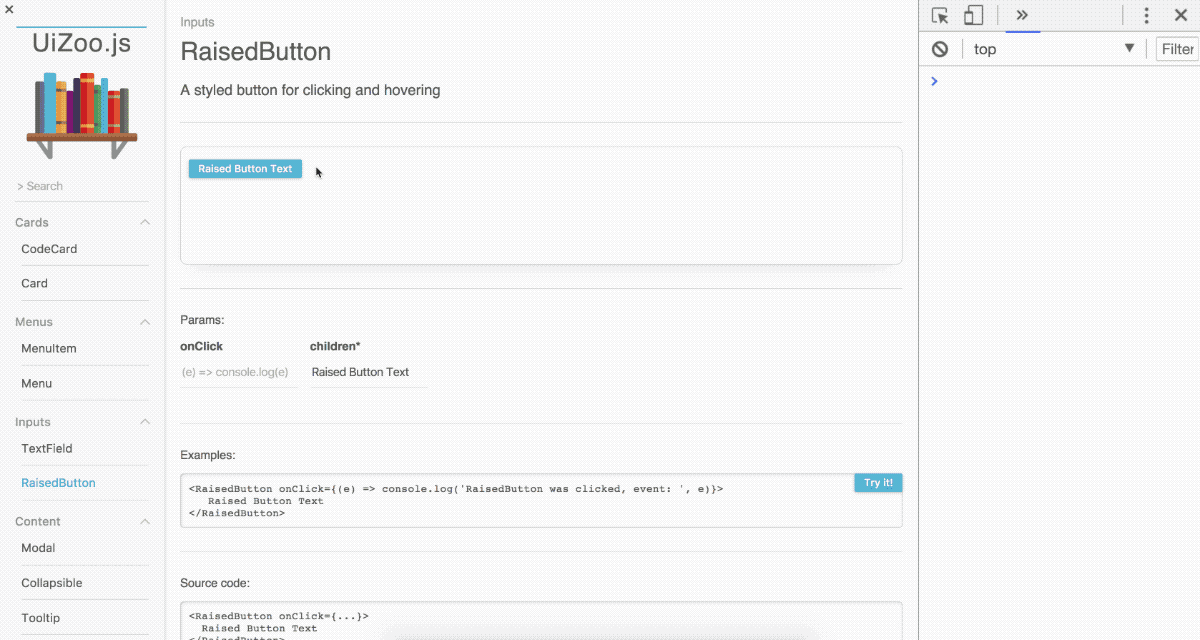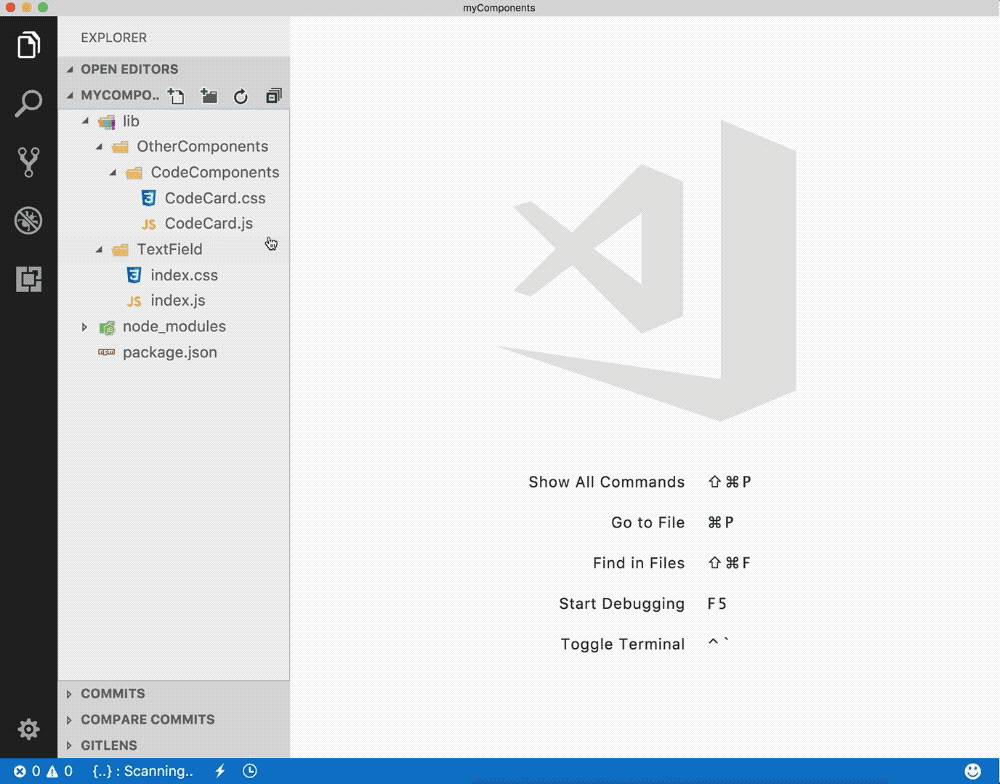Try our live example here.
How many times did you create a new component just to find later someone already did the exact same? How many times did you find out that a "generic" component you wanted to use is actually tightly-coupled to the environment it was developed upon? Well, no more! introducing - UiZoo.js
It will showcase your components, letting you develop in a sterile environment and browse what you already have and can use, to better re-use your components. And all this with almost no effort!
We use JSDoc parsing from your current components to showcase them, with all of their possible properties, examples, and descriptions. This tool can be used for developing, for Product Managers to know what is possible, for UX to see what we have so far, and it can be a playground for co-operation between all of the above.
Just use our zero-configuration CLI! it's easy as pie! 🍽
npm i -g uizoo
In a directory, do:
uizoo
It will create a webpack development server fully configured with Hot Module Replacement to watch your files while you develop!
For example:
Start the server with the newly added script:
npm start uizoo
The CLI creates a directory called uizoo-app, in it there is a file called config.js that determine basic stuff like the server's port, glob to find your components and more. There is also a very simple webpack configuration called webpack.uizoo.js.
If you don't want to install UiZoo globally, you can instead do:
npm i -D uizoo && ./node_modules/.bin/uizoo
import UiZoo from 'uizoo';
UiZoo.init(documentation: Object, components: Object, rootElement: HTMLElement?, baseRoute: String?)
documentation - Object, mapping of component name to its documentation. See example.
components - Object, mapping of components name to components. See example.
rootElement - HTMLElement, will bootstrap UiZoo on that Element. Default is a new element on the body.
baseRoute Route to be the base before the UiZoo routes. Default to '/'. for example if the UiZoo is on your site like so: 'www.mysite.com/my/zoo/', the base route should be '/my/zoo/'.
We support many JSDoc conventions. Check out our example UI library and see its component documentation. Cool, right?
The component name
The section of the component. Will put the component inside this section on the SideBar.
The component description
A JSX example, this tag can be used multiple times for more examples. 1st example will be loaded as the default when browsing to a component page. When loading an example - it will change the url accordingly, this enables you to share configurations with anyone! This is great for code-reviews reference!
You can add comments and they will stay in the examples section of the component on the example.
A possible prop for the component, use JSDoc optional syntax for marking a prop as optional. For some prop types, like function or JSX (indicating 'node' or 'ReactElement'), we have special inputs
You can also indicate literal string/number for the type and the input will be a menu of items with those values
See video example: https://youtu.be/KRCM0fHTXms
Contributions and feedback are very welcome! Feel free to open issues. See our guidelines.
The tests package is isolated and located inside the /tests folder. The target of the tests is to run locally before committing changes and to be a sanity indicator that everything is okay. Tests are written in Protractor with Karma and they cover the project from end-to-end.
To perform the tests once, run:
npm test
To add tests, use the following steps -
First, make sure the app is up and running:
npm start
The first time tests are run, install the npm dependencies:
cd tests
npm i
Run the following to get the testing server up and to begin the typescript watch:
cd tests
npm start
To begin tests, open another tab and run:
cd tests
npm test
MIT




